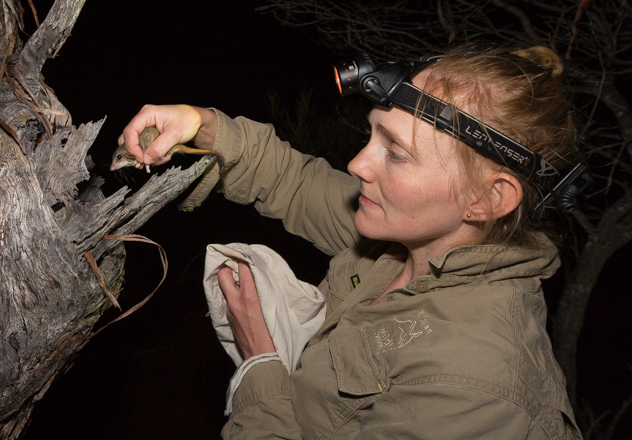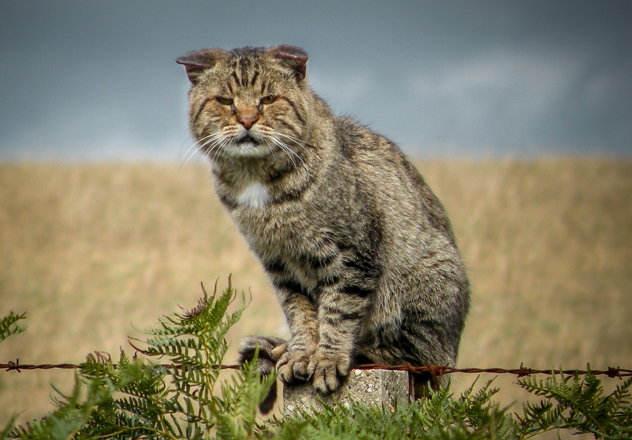The Red-tailed Phascogale is a small, ashy grey coloured insectivorous marsupial with a distinctive reddish-brown tail. Predation by feral cats is considered the primary cause of decline of Red-tailed Phascogales. AWC is undertaking a reintroduction program of Red-tailed Phascogales to Mt Gibson and Newhaven Wildlife Sanctuaries.

 © Brad Leue/AWC
© Brad Leue/AWC
AWC is undertaking a reintroduction program of Red-tailed Phascogales to Mt Gibson and Newhaven Wildlife Sanctuaries, with the goal of establishing wild, self-sustaining populations.
During 2017 and 2018, AWC translocated 145 Red-tailed Phascogales to the feral-free fenced enclosure at Mt Gibson Wildlife Sanctuary. In June 2020, 29 Red-tailed Phascogales were reintroduced to Newhaven’s feral predator-free area, followed by another 61 sub-adults in November 2020.
AWC ecologists are monitoring these establishing population and additional translocations are planned to bolster numbers and genetics.
 © Richard Ali/Invasive Animals CRC
© Richard Ali/Invasive Animals CRC
Predation by feral cats is considered the primary cause of decline of Red-tailed Phascogales (Woinarski et al. 2014). Predation by foxes, habitat loss and fragmentation and a shortage of suitable nesting hollows have also been identified as factors in the species’ decline (Short and Hide 2011).
 W Lawler/AWC
W Lawler/AWC
Description
The Red-tailed Phascogale is a small, ashy grey coloured insectivorous marsupial with a distinctive reddish-brown tail, which ends in a brush of long black hairs. The average bodyweight of males is 60 grams, and for females is 43 grams.
Ecology
Red-tailed phascogales are a nocturnal, semi-arboreal species that can leap up to 2 metres between tree canopies. Animals generally move to the ground to feed on a wide range of insects and spiders, and do not need to drink water. This species has an interesting life history pattern, in that after the winter mating period, all of the males experience post-mating mortality. As such, males only live for 11.5 months, while females can live up to 36 months and produce 2-3 litters of young during their life.
Range and Abundance
The pre-European range of the Red-tailed Phascogale extended through much of arid and semi-arid Australia, including western New South Wales, South Australia, central Australia and Western Australia. However, this species’ range has contracted to the south-west of Western Australia and is restricted to remnant patches of bushland in the Wheatbelt Region.
Donate to help protect the Red-tailed Phascogale and other endangered species from extinction
Donate NowMt Gibson Wildlife Sanctuary protects a large area of diverse habitat in the south of Western Australia. As the site...
Newhaven Wildlife Sanctuary is one of Australia’s largest non-government protected areas, offering beautiful scenery and a diverse mix of arid...
The Ngalurrtju Aboriginal Land Trust sprawls across 323,128 hectares on the eastern edge of the Great Sandy Desert bioregion in...
The Purple-crowned Fairy-wren is a small social bird found in dense riparian vegetation in northern Australia.
In regions where Common Brushtail Possum are rare, AWC protects them at its sanctuaries and partnership areas.
Weighing less than a golf ball, the Eastern Pygmy Possum is one of the smallest possums in the world.